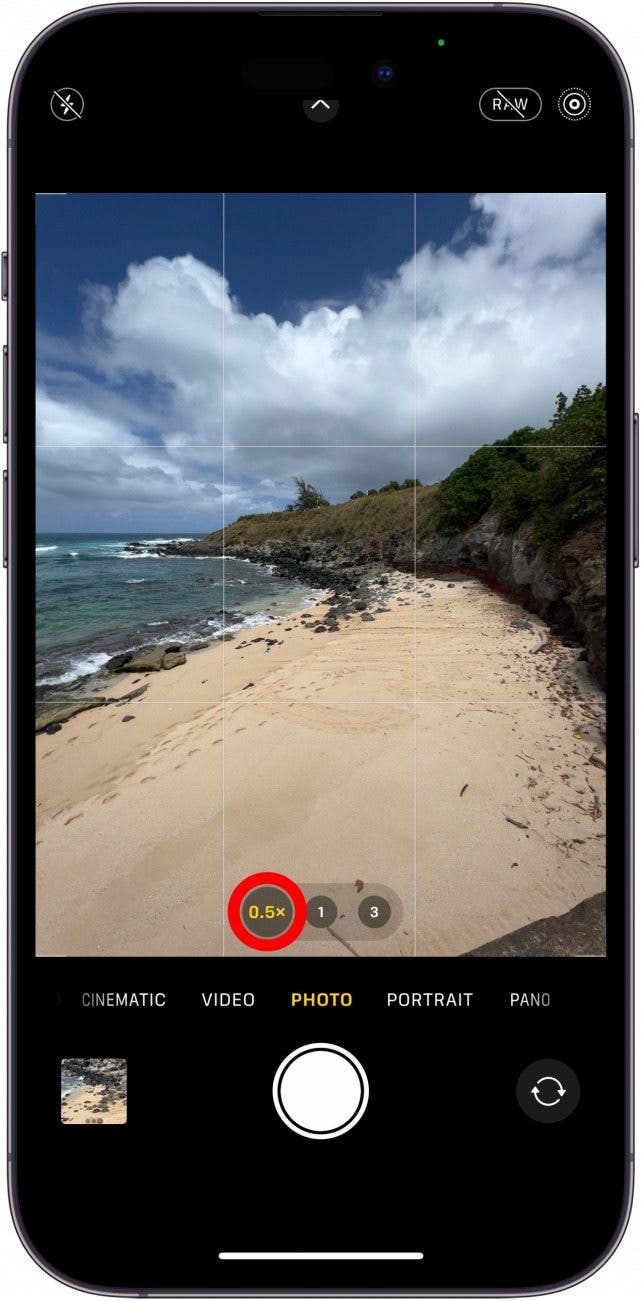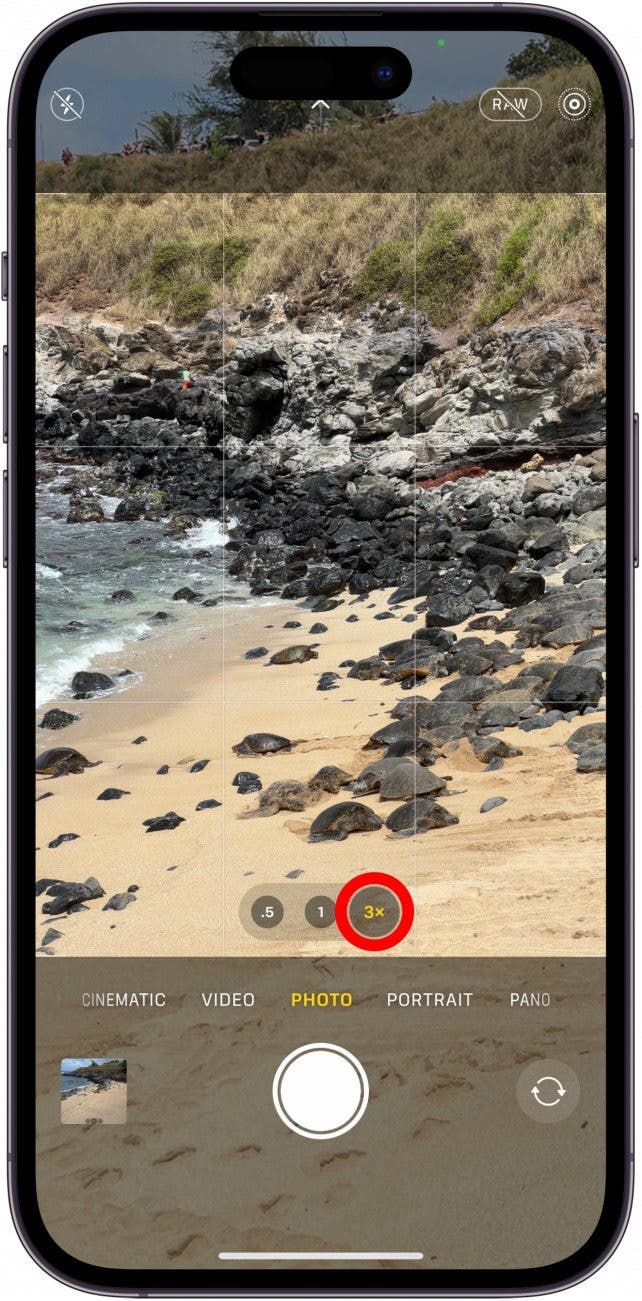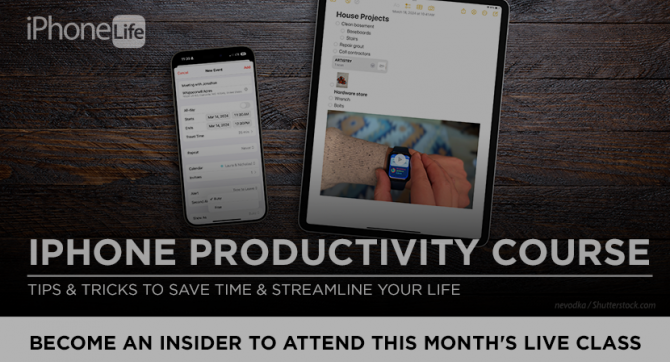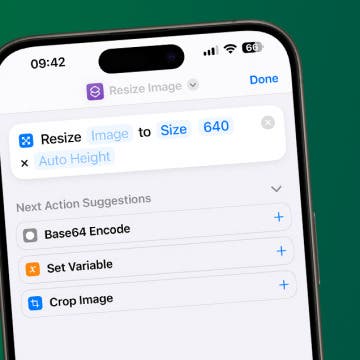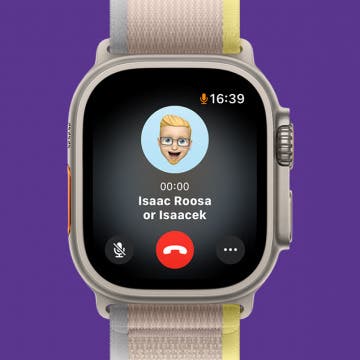What to Know
- Optical zoom moves in to a certain area to magnify the image while digital zoom enlarges an image that is already there.
- The iPhone Pro line starting with the 11 offers optical zoom in while the non-Pro line only offers optical zoom out.
- To ensure optical zoom, tap the numbers at the bottom of your viewfinder instead of using your finger to pinch in or out.
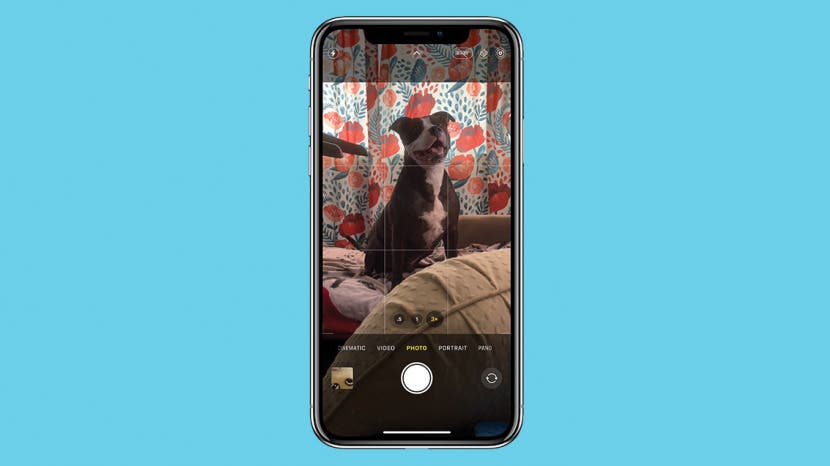
Any iPhone with two or more rear cameras has both optical and digital zoom capabilities. This article will teach you the difference between them so that you can take better photos. I'll also teach you a trick to ensure you are using optical zoom for the best results.
Jump To:
Optical Zoom vs. Digital Zoom Explained
The difference between optical and digital zoom is essential to understand if you want to take better quality photos and videos. Digital zoom uses magnification technology to enlarge the image area by cutting down on the megapixels, which lowers the quality of the image or footage.
My colleague Cullen Thomas, Senior instructor and video and photography expert, has a great way of explaining it in an easy-to-understand way. Imagine that instead of taking a photo you’re painting a landscape with a house in it. Digital zoom is like painting the whole landscape and hanging it on the wall, then moving closer to the finished painting to get a better look at the house. The painted house will appear larger, but all the imperfections get bigger too. You’re not expanding details of the landscape: you’re expanding details of the paint.

Optical zoom is like looking at the house through binoculars to paint a picture of the house. You get lots of accurate detail on the house, but nothing on the landscape. Digital zoom moves closer to the canvas. Optical zoom uses optics to fill the canvas with a smaller section of the scene.
iPhone cameras don’t have telescope-style lenses that can actually zoom in and out. Instead, newer phones have multiple whole separate cameras, each with a different optical lens that offers a separate, specific, unchanging, level of telescopic zoom. They make it look like you’re zooming smoothly in by switching between the different cameras. To learn more about your iPhone's Camera app, don't forget to sign up for our free Tip of the Day newsletter.
Next, let's talk about the different levels of optical zoom offered by a few different iPhone cameras. The iPhone 15 Pro, iPhone 15 Pro Max, iPhone 14 Pro, and iPhone 14 Pro Max all have 0.5x, 1x (+ 2x focal length), and 3x zoom. The iPhone 13 Pro, and iPhone 13 Pro Max have 0.5x, 1x, and 3x zoom. All Pro iPhone models have a Telephoto lens, which gives you the ability to zoom in using optical zoom, so you do not compromise photo quality when you're zooming in. The iPhone 13 has 3x optical zoom in, the iPhone 12 has 2.5x optical zoom in, and the iPhone 11 has 2x optical zoom in. Older iPhones that only have one camera can only do digital zoom
The non-Pro iPhone 15, 14, 13, 12, and 11 models with two rear-facing cameras have a Wide lens and an Ultra Wide lens. They have 2x optical zoom out (using the Ultra Wide lens) and no optical zoom in. You can learn more about the zoom capabilities or your iPhone’s model on Apple’s website.
When Apple states the optical zoom range of a camera, both optical zoom in and optical zoom out are included. So when Apple says that the Pro iPhone 14 and 13 have a 6x optical zoom range, this means that you can zoom out 2x and zoom in 3x.
How to Ensure Optical Zoom
Now that you understand the difference between digital and optical zoom, the next step is to learn how to use the lenses to zoom in and out. Don’t forget that only the iPhone 15, 14, and 13 Pro models will have a 3x zoom button in the Camera app. Other iPhone Pro models have either a 2.5x or 2x button instead. Many iPhones only have the 1x and 0.5x buttons, so if you don't see the 3x zoom option I use below, you can still use the options you see to ensure optical zoom.
- Open the Camera app and pick the photo or video mode of your choice.
![Open the Camera app and pick the photo or video mode of your choice.]()
- The default lens is the 1x Wide lens.
![The default lens is the 1x Wide lens.]()
- Tap 0.5x to zoom out using the Ultra Wide lens.
![Tap 0.5x to zoom out and use the Ultra Wide lens.]()
- Tap 3x to zoom in and use the Telephoto lens.
![Tap 3x to zoom in and use the Telephoto lens.]()
Warning: If you are using the default Photo mode, there is a chance that you are zooming digitally even if you tap the 3x button. You can test this easily by tapping the 3x button and covering the top camera lens (which is the Telephoto lens) with your finger. If you can still see what's ahead of you, you are unfortunately using digital zoom. If the image is blocked out by your finger, congrats: you're using optical zoom!
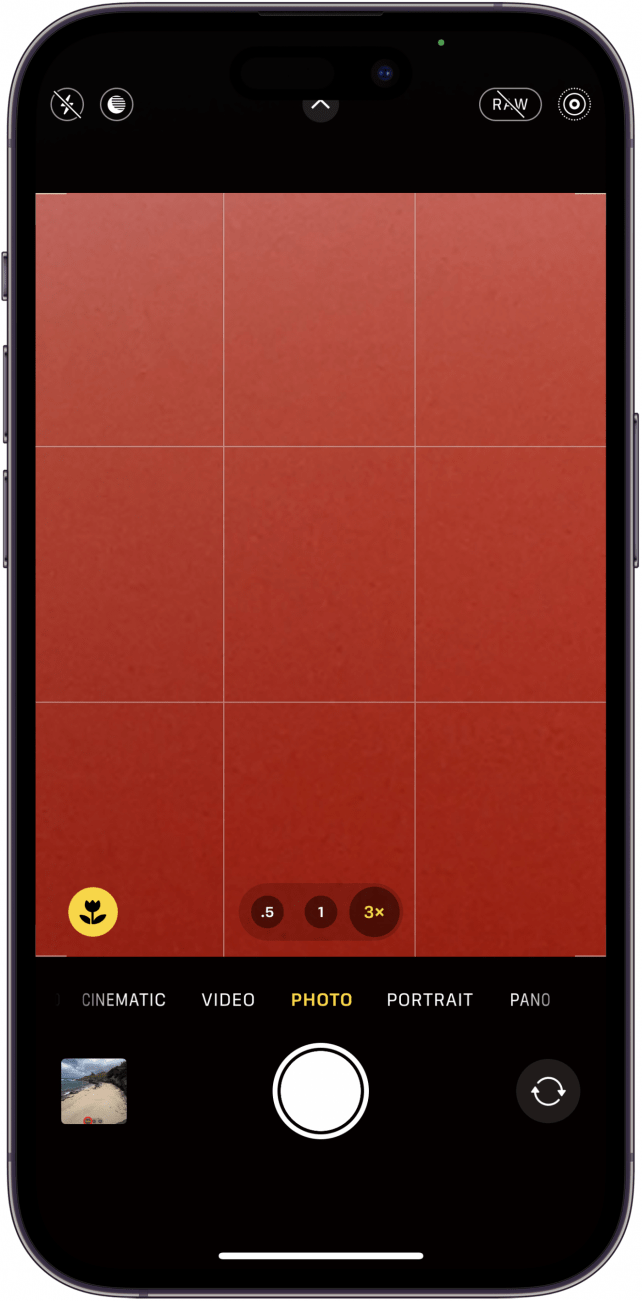
If you switch to Portrait mode and tap 3x, you’ll be using optical zoom. However, your background will be blurred once you take the photo. This can be removed in the photos app after you take the photo, but this is a lot of effort to ensure optical zoom. This is why many iPhone users prefer third-party camera apps, such as ProCam 8 ($7.99 one-time fee) that give you full control over which lenses you use.
I hope you have a better understanding of digital vs. optical zoom now! Just to recap: digital zoom is more pixilated and lower quality than optical zoom. Only iPhones with a Telephoto lens and/or Ultra Wide lens, such as iPhone 14, 13, 12, and 11, have optical zoom. Almost any iPhone model can use a third-party lens to achieve optical zoom or other unique photo effects.
FAQ
- What is the meaning of optical zoom? Optical zoom is a way of zooming in that makes the subject look nearer to you, as if you were looking through a pair of binoculars.
- What is a good optical zoom range? High-end equipment can typically provide an optical zoom range of up to 64x, but on a smartphone 3x is likely as high as you are going to get.
- Do you lose quality with optical zoom? No. That's one of the benefits of optical zoom over digital zoom.
- What are the disadvantages of optical zoom? The main disadvantage of optical zoom is it's harder to accomplish and depends entirely on hardware so your options tend to be more limited.


